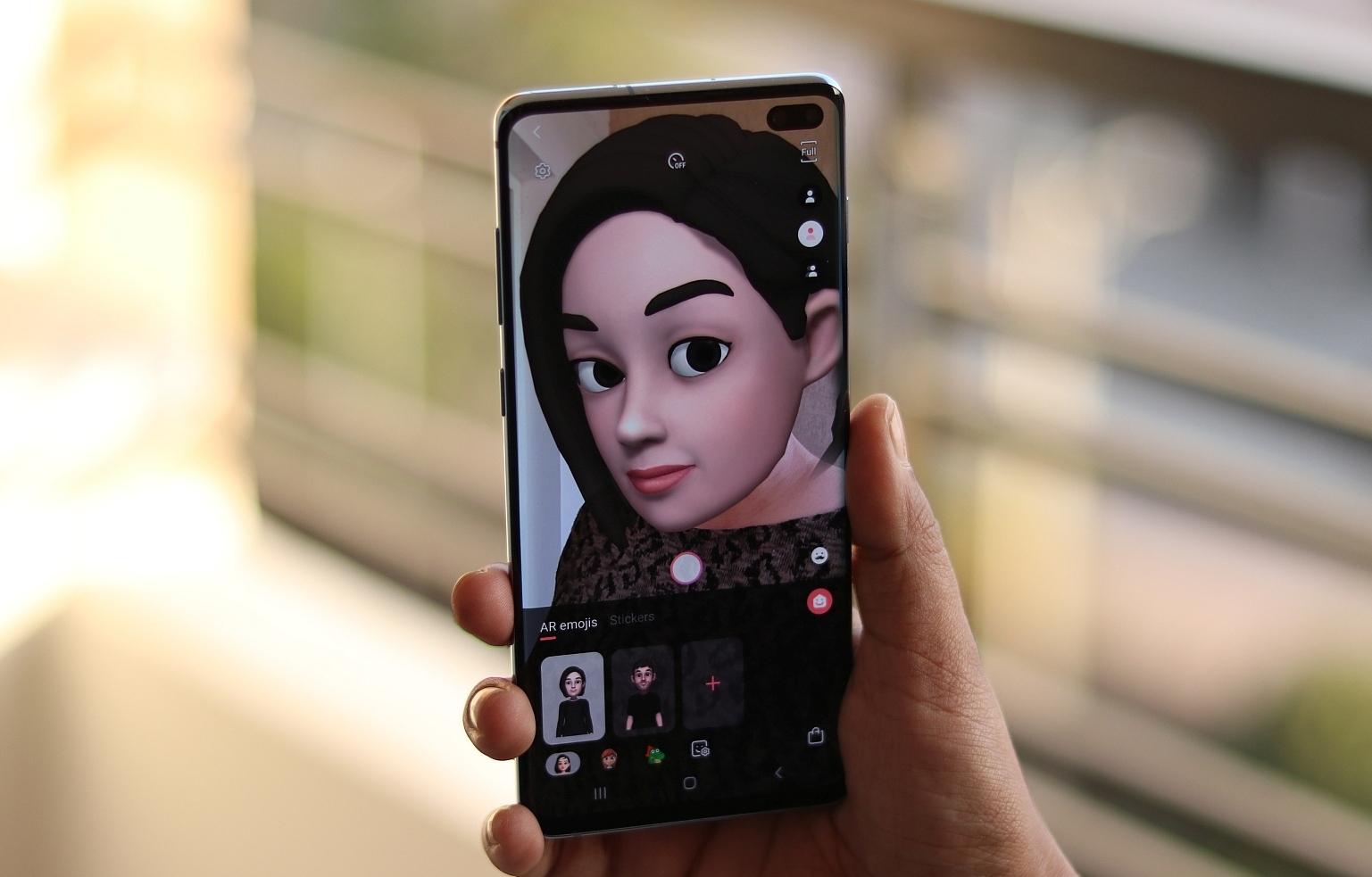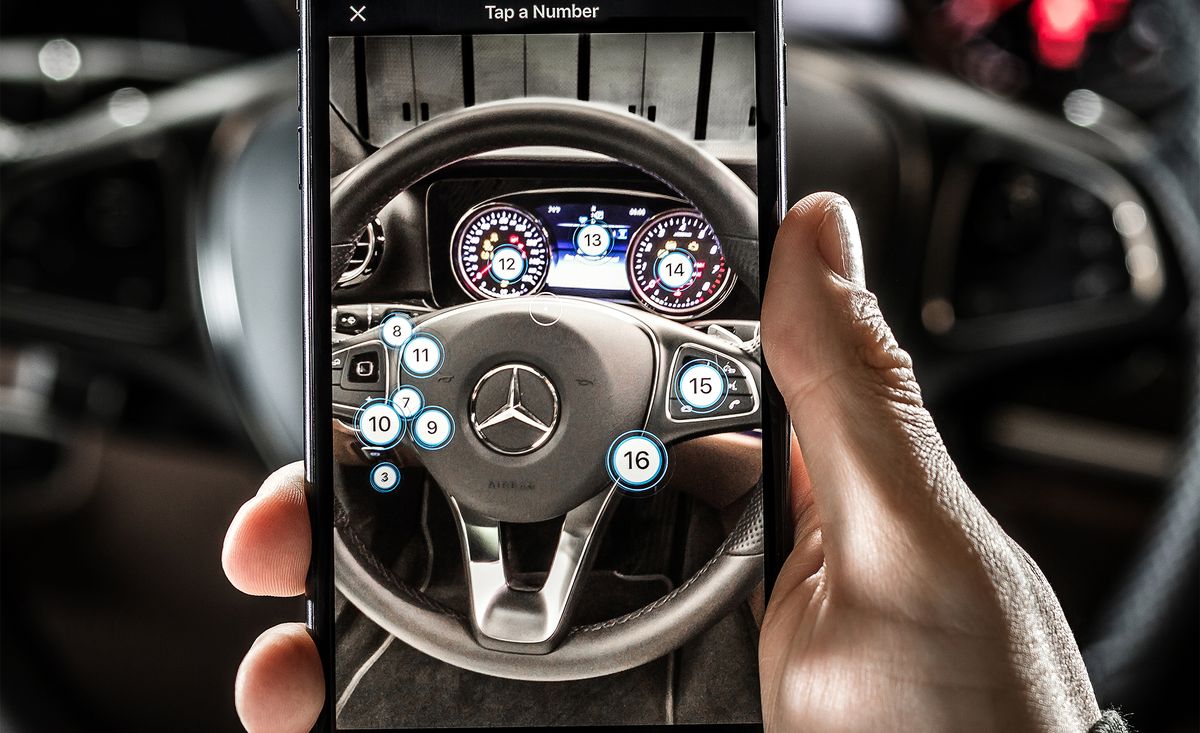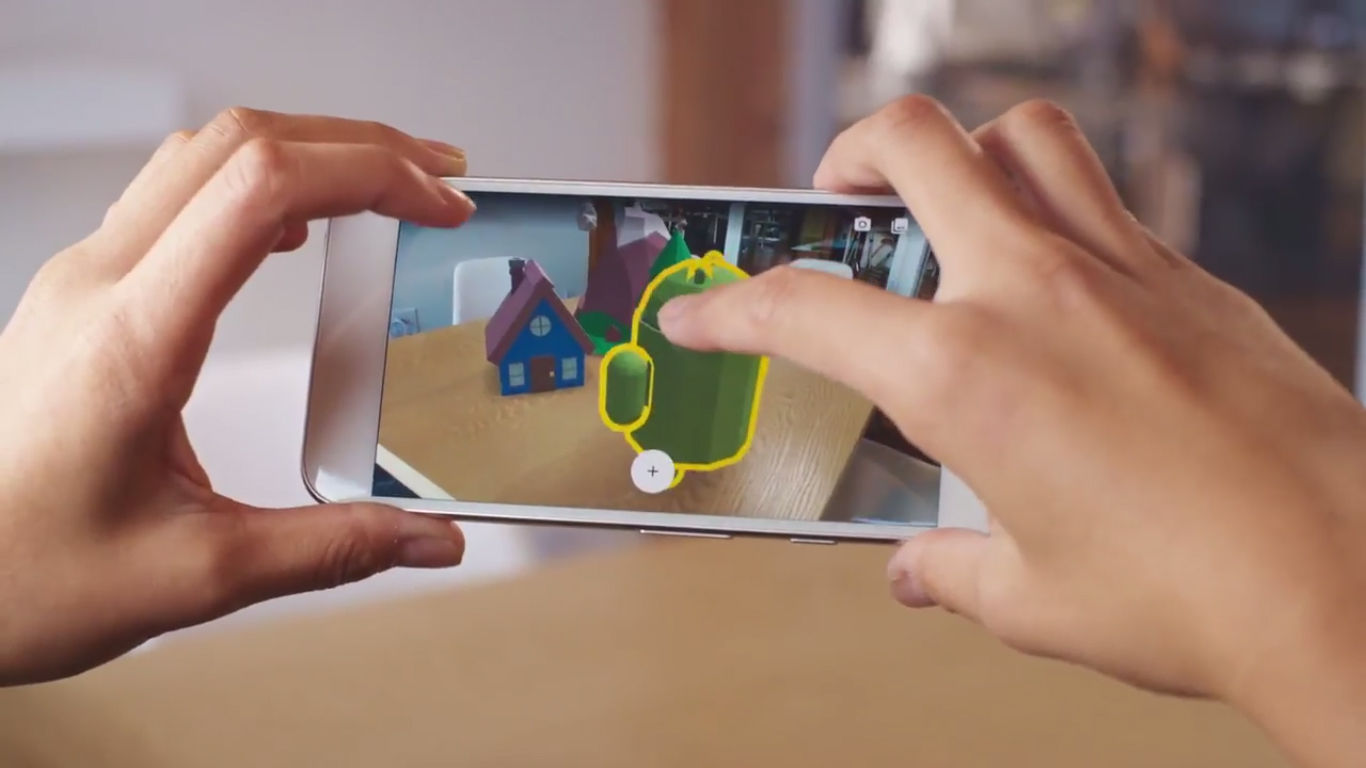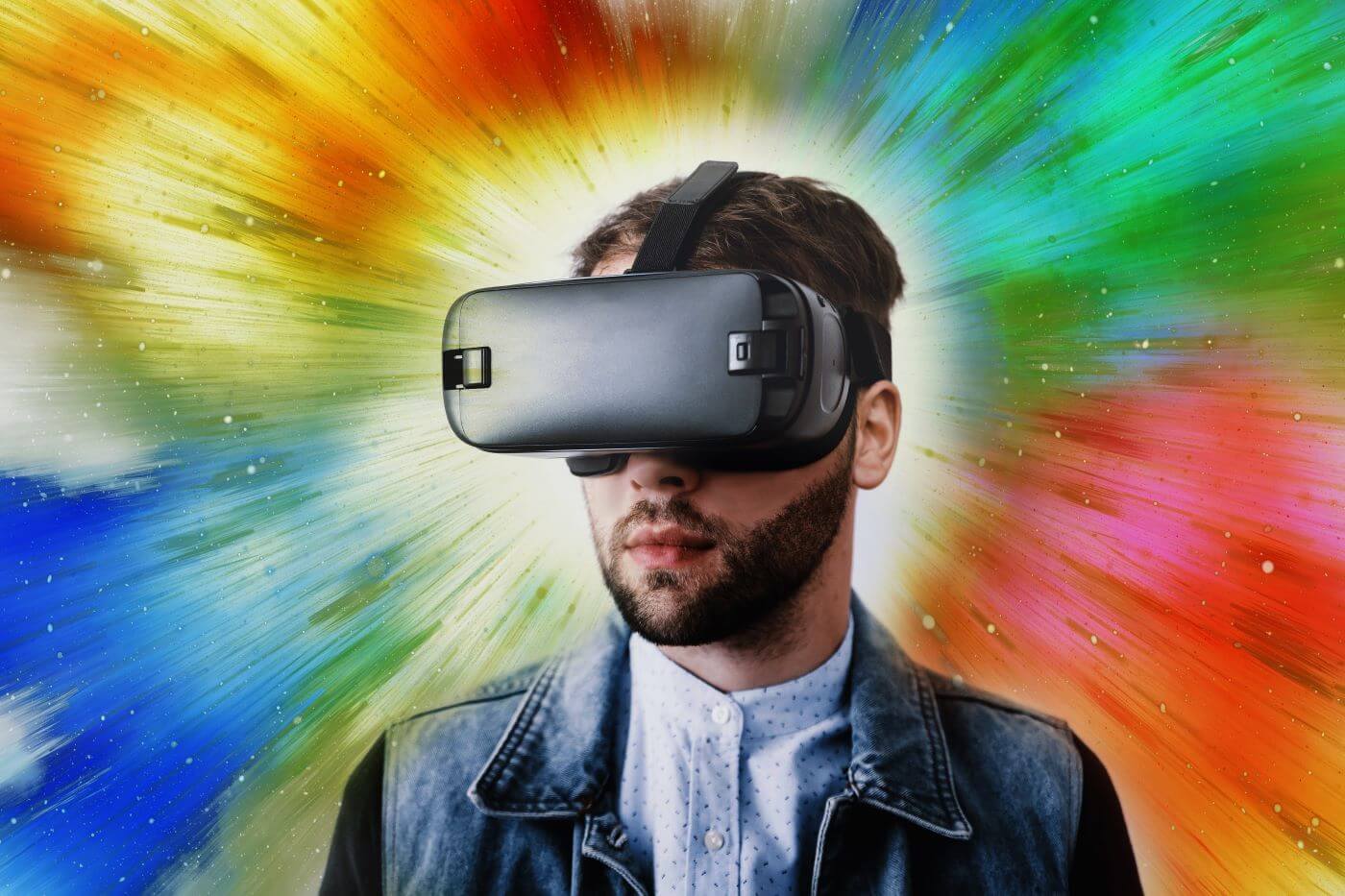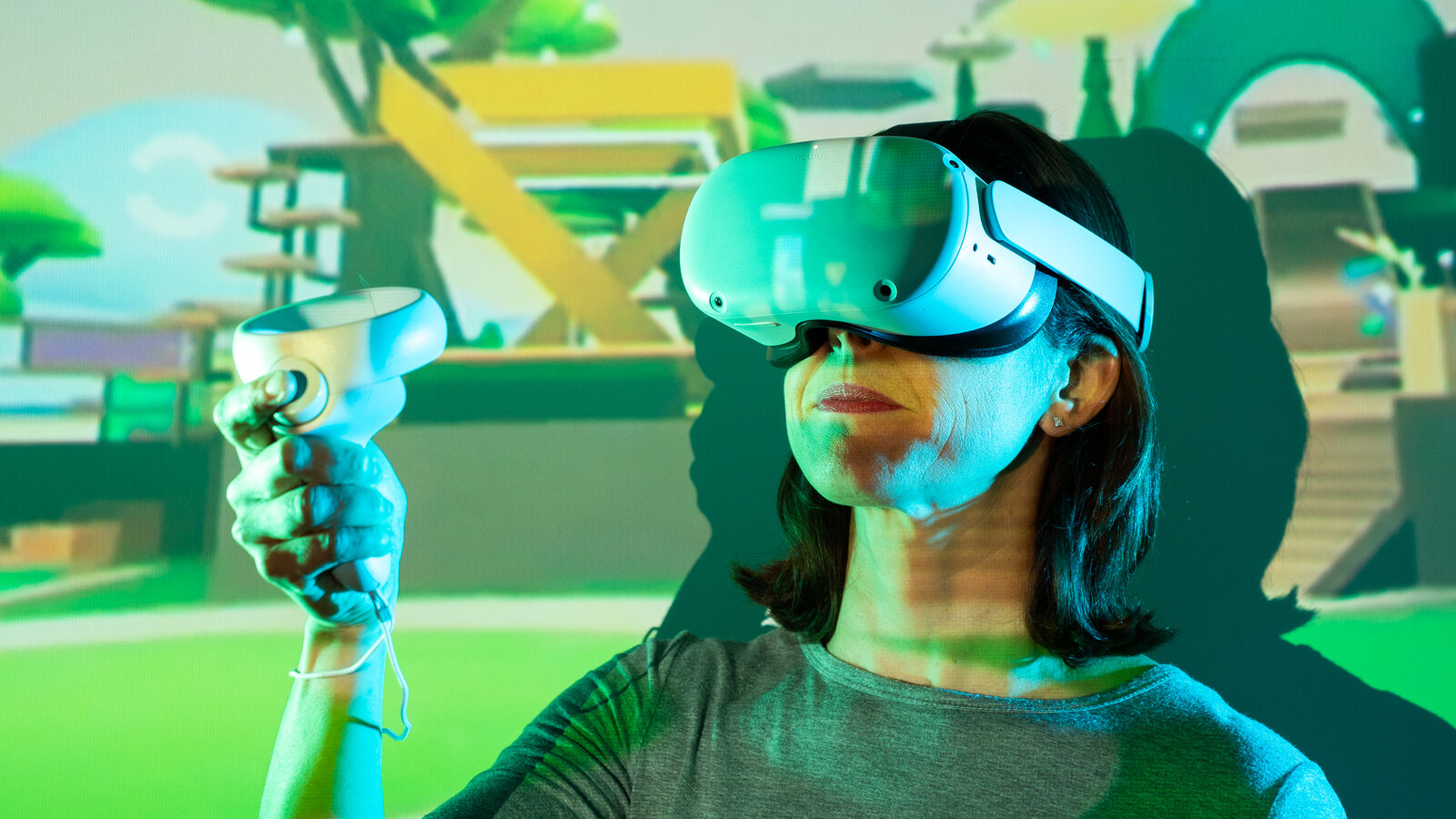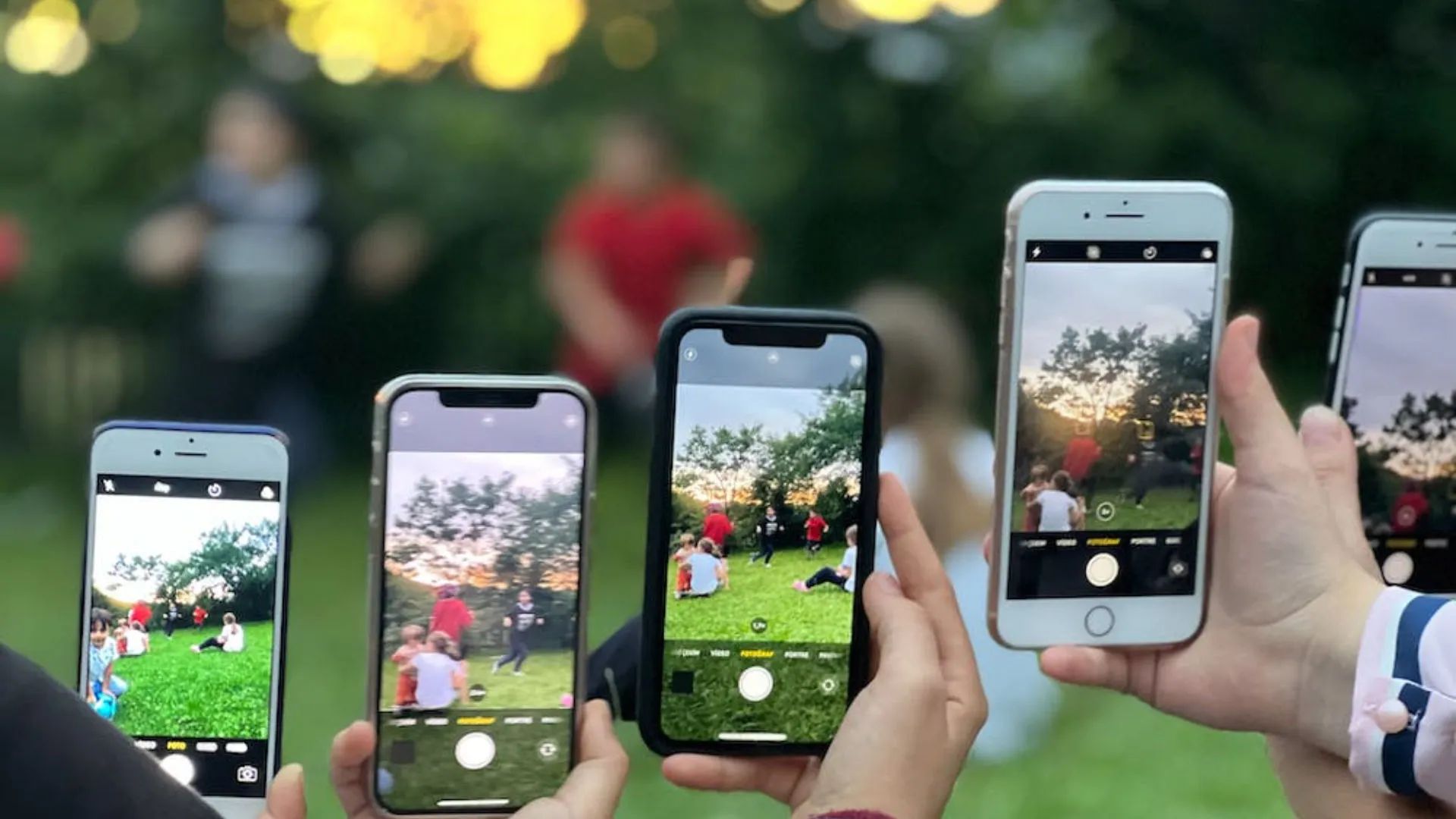What Is AR Zone?
AR Zone stands for Augmented Reality Zone, which is a feature available on Android devices. It harnesses the power of augmented reality (AR) technology to bring virtual objects and experiences into the real world through your device’s camera. AR Zone provides a platform for various AR applications and allows users to explore and interact with digital content in a more immersive and engaging way.
With AR Zone, your Android device becomes a window to a whole new world of possibilities. Whether it’s placing virtual furniture in your living room, playing AR games, or trying on virtual makeup, AR Zone allows you to experience and manipulate digital content in a more realistic and interactive way.
AR Zone uses computer vision and motion tracking technology to overlay virtual objects onto the real-world environment captured by your device’s camera. This creates the illusion that the virtual objects are actually present in the physical space around you. AR Zone can recognize flat surfaces, track objects or images, and apply 3D graphics to enhance the overall experience.
One of the key advantages of AR Zone is its ability to bridge the gap between the virtual and real worlds. It allows users to merge digital content with their immediate surroundings, blurring the lines between what is real and what is computer-generated. This not only adds an element of fun and excitement to everyday activities but also has practical applications in various fields such as education, gaming, marketing, and more.
AR Zone is compatible with a wide range of Android devices and is often pre-installed on devices that support AR technology. However, it is worth noting that the availability and features of AR Zone may vary depending on the device model and the version of the Android operating system.
In the next section, we will delve deeper into how AR Zone works and explore its features in more detail.
How Does AR Zone Work?
AR Zone utilizes a combination of hardware and software technologies to enable augmented reality experiences on Android devices. Here’s a closer look at how AR Zone works:
1. Camera and Sensors: The core component of AR Zone is the device’s camera. It captures the real-world environment and acts as a window through which virtual objects are overlaid. The camera works in conjunction with sensors such as accelerometer, gyroscope, and magnetometer to track the device’s position and orientation in space, ensuring accurate alignment of virtual objects within the physical environment.
2. Computer Vision: AR Zone employs computer vision technology to analyze the camera feed in real-time. It can detect and track features and objects in the environment, such as flat surfaces, edges, and markers. This information is used to anchor virtual objects onto the real-world scene, providing a seamless integration of digital and physical elements.
3. Motion Tracking: By continuously analyzing the device’s movement and orientation, AR Zone can accurately track its position and adjust the virtual objects accordingly. This allows users to move around and interact with the augmented reality content in a natural and intuitive manner.
4. Rendering and Display: Once the virtual objects are positioned and aligned with the real-world scene, AR Zone renders them using advanced graphics techniques. This includes applying textures, effects, and lighting to make the virtual content blend more realistically with the environment. The rendered images are then displayed on the device’s screen, providing the user with a live augmented reality experience.
5. Interaction and Gestures: AR Zone supports various gestures and interactions to enable user engagement with the augmented reality content. This can include tapping, swiping, pinching, and using motion gestures to manipulate virtual objects, change perspectives, or trigger specific actions within the AR environment.
AR Zone works in tandem with AR applications and software development kits (SDKs) to provide a platform for developers to create immersive AR experiences. Developers can leverage AR Zone’s capabilities to build applications that combine virtual content with real-world elements, unlocking a wide range of possibilities in gaming, education, shopping, and more.
Now that we understand how AR Zone functions, let’s explore some of its key features in the next section.
Features of AR Zone
AR Zone offers a variety of features that enhance the augmented reality experience on Android devices. Let’s take a closer look at some of the key features of AR Zone:
1. Object Tracking: AR Zone enables precise object tracking, allowing virtual content to interact with physical objects in real time. This feature can be utilized in various applications, such as overlaying information on products, recognizing and tracking specific items, or creating interactive gaming experiences.
2. Face Tracking: With AR Zone, users can experience face tracking technology, which identifies and tracks facial features in real time. This enables fun and engaging face filters, virtual makeup application, and facial animations, giving users the ability to transform their appearance and express themselves creatively.
3. 3D Modeling and Rendering: AR Zone supports 3D modeling and rendering capabilities, allowing developers to create and display realistic virtual objects in the augmented reality environment. This includes applying textures, materials, and lighting effects to enhance the visual quality and make the virtual content blend seamlessly with the real-world scene.
4. Augmented Reality Effects: AR Zone offers a wide range of augmented reality effects that can be applied to enhance the overall AR experience. These effects can include filters, animations, virtual objects, and overlays that can be easily integrated into photos or videos captured using the device’s camera.
5. AR Kit Compatibility: AR Zone is compatible with AR Kit, which is a framework developed by Google to provide a standardized platform for AR applications on Android devices. This compatibility ensures seamless integration with AR apps and allows users to access a growing library of AR experiences.
6. Interactive Gestures: AR Zone supports various interactive gestures, allowing users to interact with virtual objects and control the AR environment. Users can perform actions such as tapping, swiping, dragging, or rotating to manipulate virtual objects, change perspectives, or trigger specific interactions within the augmented reality scene.
7. Developer-Friendly: AR Zone provides developers with the necessary tools and resources to create innovative AR applications. It offers a software development kit (SDK) and APIs that enable developers to leverage AR capabilities and create immersive augmented reality experiences tailored to specific user needs and interests.
These are just a few of the many features that AR Zone brings to the table. With its advanced capabilities and developer-friendly approach, AR Zone opens up endless possibilities for immersive and interactive augmented reality experiences on Android devices.
Examples of AR Zone Applications
AR Zone has revolutionized the way we interact with digital content by seamlessly merging virtual objects with the real-world environment. Here are some examples of how AR Zone is being used in different applications:
1. Gaming: AR Zone has transformed the gaming experience by allowing users to bring virtual characters and objects into their physical surroundings. Games like Pokémon Go use AR Zone to place virtual creatures in real-world locations, creating an immersive and interactive gaming experience that blurs the boundaries between the virtual and real worlds.
2. Education: AR Zone has found its way into educational applications, providing a hands-on and interactive learning experience. For example, AR Zone can bring historical landmarks and artifacts to life, enabling students to explore and interact with them in a virtual environment. It can also be used to visualize complex concepts, such as the human anatomy or astronomy, by overlaying 3D models and information onto real-world objects.
3. Shopping: AR Zone is being used by online retailers to enhance the shopping experience. With AR Zone, users can virtually try on clothes, accessories, and even makeup, eliminating the need to visit physical stores. The technology accurately tracks the user’s movements and superimposes the virtual items onto their image in real time, allowing them to see how the items would look and fit before making a purchase.
4. Interior Design: AR Zone is a game-changer for interior designers and home decor enthusiasts. By leveraging AR Zone, users can visualize how furniture, artwork, and other decor items would look in their actual living space. They can place virtual objects and move them around, experimenting with different layouts and styles, without physically purchasing or rearranging anything.
5. Navigation: AR Zone is used in navigation applications to provide real-time visual guidance. Instead of following a static map, AR Zone overlays navigation instructions onto the live camera feed, presenting arrows or pointers that guide users to their destination. This technology simplifies navigation, especially in unfamiliar areas, by providing a more intuitive and immersive experience.
6. Advertising and Marketing: AR Zone has opened up new possibilities for advertising and marketing campaigns. Brands can create interactive AR experiences that allow users to scan product labels or images to reveal additional content, promotions, or product information. AR Zone can also be used to create captivating augmented reality advertisements that engage users and leave a lasting impression.
These are just a few examples of how AR Zone is being applied in various industries. As technology continues to advance, we can expect to see even more innovative and exciting use cases for AR Zone in the future.
How to Enable AR Zone on Android
Enabling AR Zone on your Android device allows you to access the augmented reality features and applications that it offers. The process may vary slightly depending on the device model and Android version, but here are the general steps to enable AR Zone:
1. Open Settings: Go to the Settings app on your Android device. You can usually find it in the app drawer or by swiping down from the top of the screen and tapping the gear-shaped icon.
2. Find “AR Zone” or “AR+” Option: Look for the AR Zone or AR+ option in your device settings. It may be located under the “Connections” or “Advanced Features” section, depending on your device’s manufacturer and Android version.
3. Enable AR Zone: Tap on the AR Zone option and toggle the switch to enable it. This will activate the AR features on your device.
4. Additional Downloads: In some cases, enabling AR Zone may prompt you to download additional files or updates to ensure compatibility and optimize performance. Follow the on-screen prompts to complete any necessary downloads or installations.
5. Launch AR Applications: Once AR Zone is enabled on your device, you can start using augmented reality applications that are compatible with your device. These apps may be pre-installed or can be downloaded from the Google Play Store.
Note: If you cannot find the AR Zone option in your device settings, it may indicate that your device does not support AR Zone or that the feature is not available on your specific Android version. In such cases, you may need to explore alternative augmented reality apps or consider upgrading to a device that supports AR technology.
Keep in mind that the availability and functionality of AR Zone may differ across different Android devices. It’s always a good idea to check your device’s user manual or visit the manufacturer’s website for specific instructions and information about AR Zone on your particular device.
With AR Zone enabled, you can now explore and enjoy the immersive and interactive world of augmented reality on your Android device.
Troubleshooting AR Zone Issues
While AR Zone on Android devices is designed to deliver an enhanced augmented reality experience, you may occasionally encounter issues or glitches. Here are some common AR Zone issues and possible troubleshooting steps:
1. Lack of AR Compatibility: Not all Android devices support AR Zone or have the necessary hardware capabilities. If you are unable to find or enable AR Zone on your device, it might indicate that your device does not support AR technology. In this case, you can explore alternative augmented reality apps or consider upgrading to a device that is AR compatible.
2. Performance Issues: If you experience lag, stuttering, or slow performance while using AR Zone, it could be due to the processing power of your device. AR applications can be resource-intensive, so closing unnecessary background apps or clearing cache and temporary files might help improve performance. Additionally, keeping your device’s software and AR Zone app up to date can ensure optimal performance and compatibility.
3. Tracking and Calibration Issues: Sometimes, AR Zone may have difficulty detecting and tracking objects or surfaces accurately. To address this, make sure the camera lens is clean and free from any obstructions. Additionally, ensure that there is proper lighting in your environment, as dimly lit areas can affect tracking accuracy. If calibration is required, follow the on-screen prompts or look for calibration options within the AR Zone settings.
4. App-Specific Problems: Certain AR apps within AR Zone may have their own distinct issues. If a particular app is not functioning properly or crashing frequently, consider updating the app to the latest version or reinstalling it. Additionally, checking for any app-specific troubleshooting guides or reaching out to the app developer’s support team can provide further assistance.
5. Inaccurate Placement of Virtual Objects: If virtual objects in AR Zone are not aligning correctly with the physical environment, try recalibrating or resetting the AR Zone settings. You can do this by going to the AR Zone settings and selecting the option to reset or recalibrate the AR feature. Follow the on-screen instructions to ensure proper alignment of virtual objects.
6. Internet Connection: Some AR applications may require a stable internet connection to work correctly. If you experience issues with specific AR features or content not loading properly, ensure that you have a stable and reliable internet connection. Switching to a different Wi-Fi network or using mobile data can help troubleshoot internet-related issues.
If the above troubleshooting steps do not resolve the AR Zone issues, it is recommended to reach out to the device manufacturer’s support team or consult the user manual for further assistance. They will have a better understanding of the specific device model and can provide tailored solutions to address any persistent issues you may encounter with AR Zone.
By troubleshooting these common issues, you can optimize the performance of AR Zone and enjoy a smoother augmented reality experience on your Android device.
Conclusion
AR Zone has transformed the way we interact with digital content, bridging the gap between the real and virtual worlds. With its advanced AR features and capabilities, Android devices have become powerful tools for exploring immersive augmented reality experiences.
In this article, we delved into what AR Zone is and how it works. AR Zone utilizes the device’s camera, sensors, and computer vision technology to overlay virtual objects onto the real-world environment, creating a seamless integration of the digital and physical worlds.
We also explored the features of AR Zone, including object tracking, face tracking, 3D modeling and rendering, and interactive gestures. These features provide users with endless possibilities, from gaming and education to shopping and interior design.
Enabling AR Zone on Android devices can be done through the device settings, although availability may vary depending on the device model and Android version. Once enabled, users can enjoy a range of AR applications and experiences tailored to their interests and preferences.
Of course, like any technology, AR Zone may encounter issues. Troubleshooting common problems such as lack of compatibility, performance issues, tracking problems, and app-specific glitches can help optimize the AR experience on your Android device.
Overall, AR Zone brings a new dimension of interactivity and immersion to Android devices. Whether you’re exploring virtual worlds, enhancing your gaming experience, or visualizing design concepts, AR Zone opens up a world of endless possibilities right at your fingertips.
So, go ahead and dive into the captivating world of augmented reality with AR Zone on your Android device. The future of digital experiences is here, and AR Zone is leading the way.







